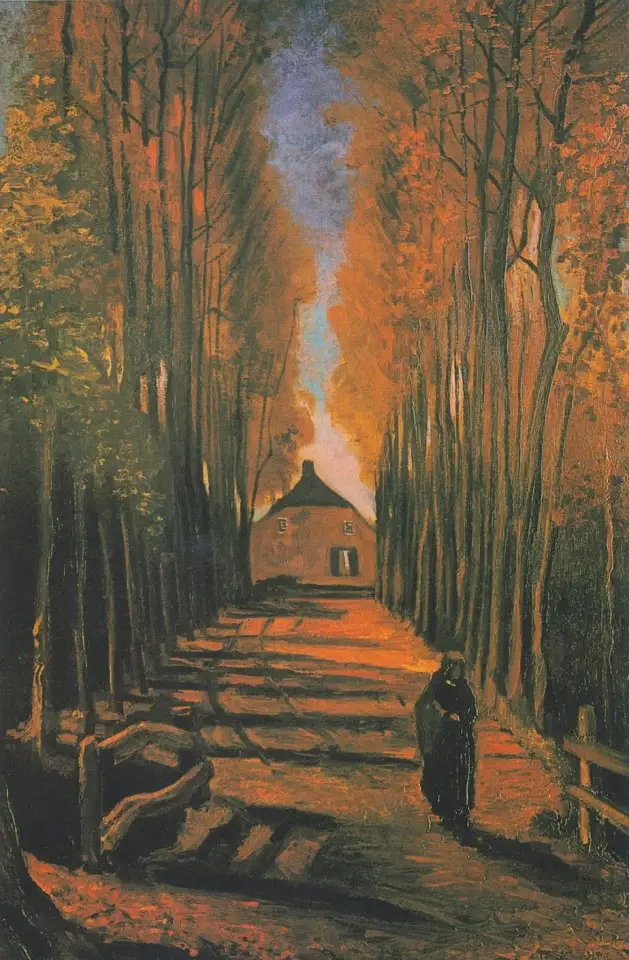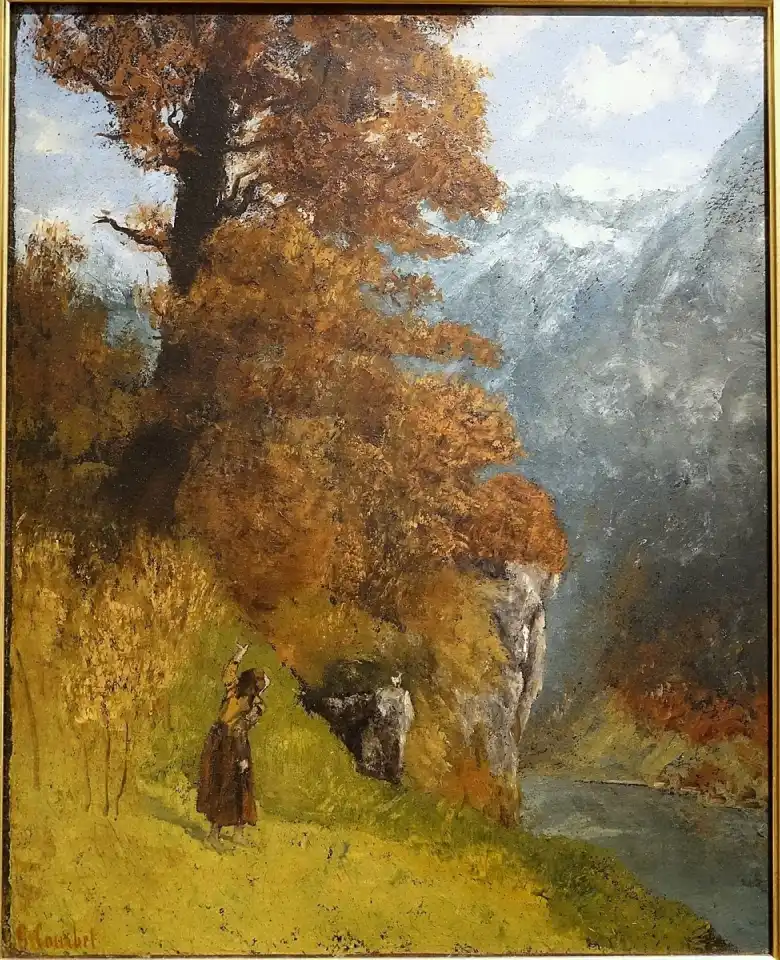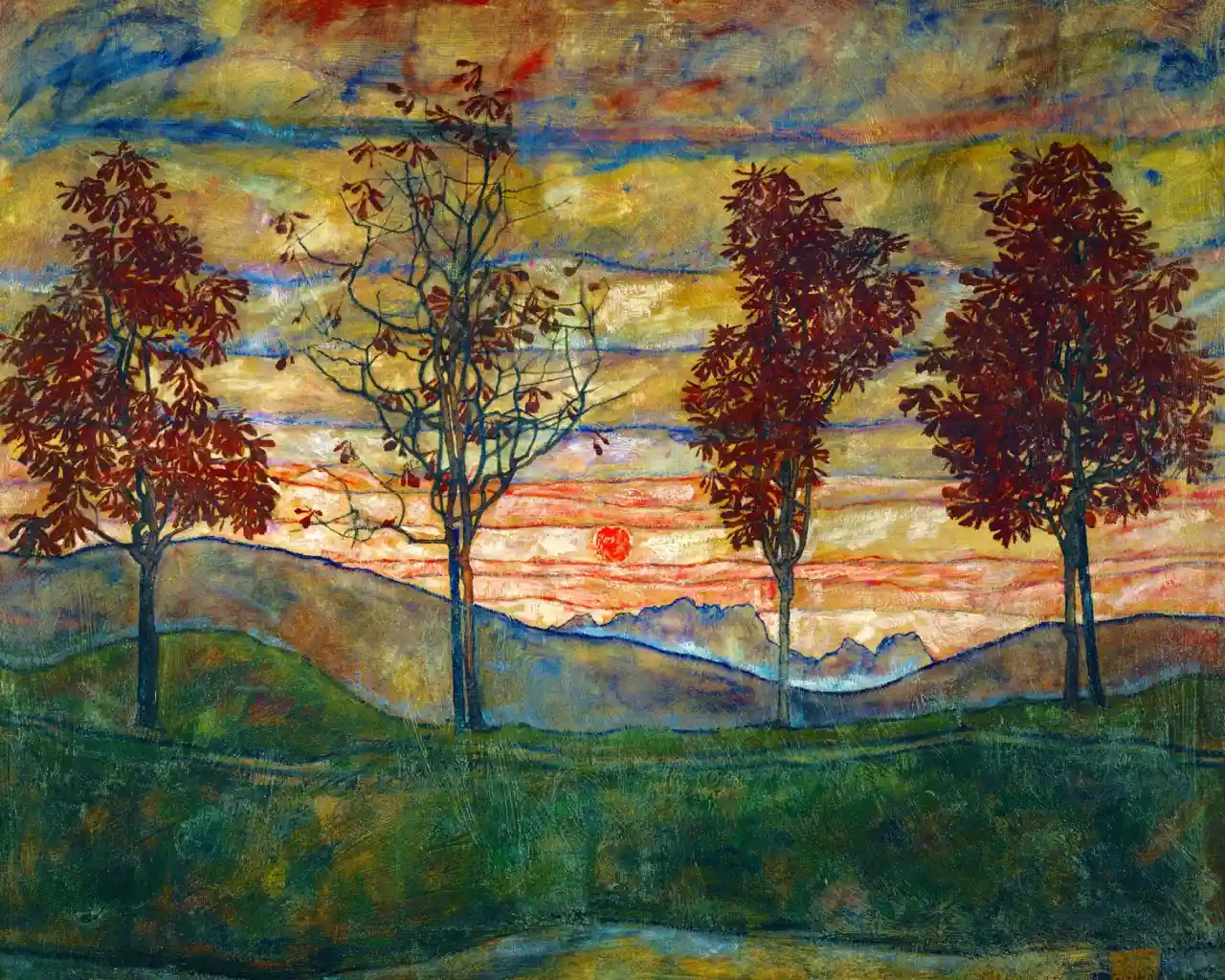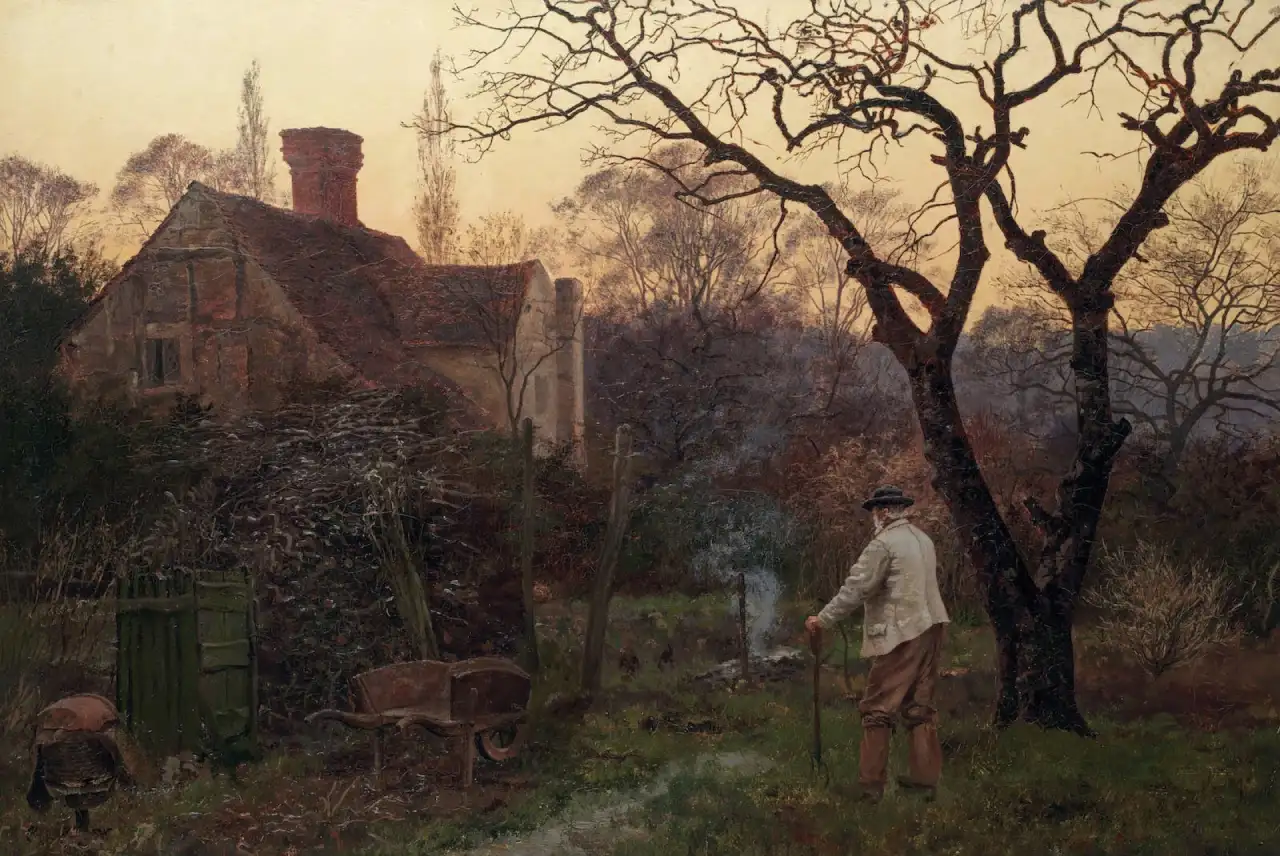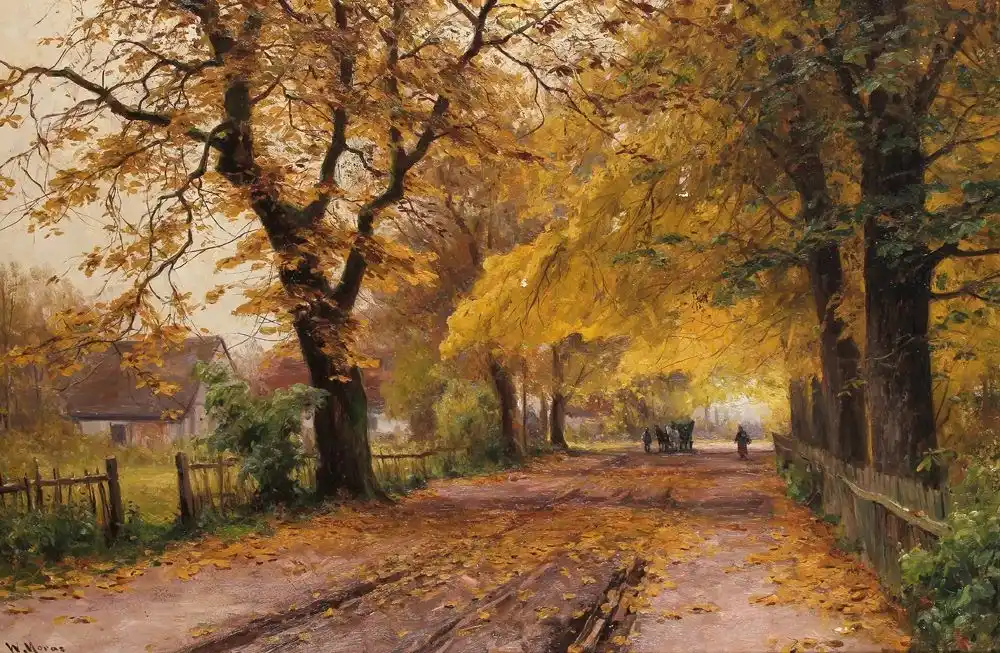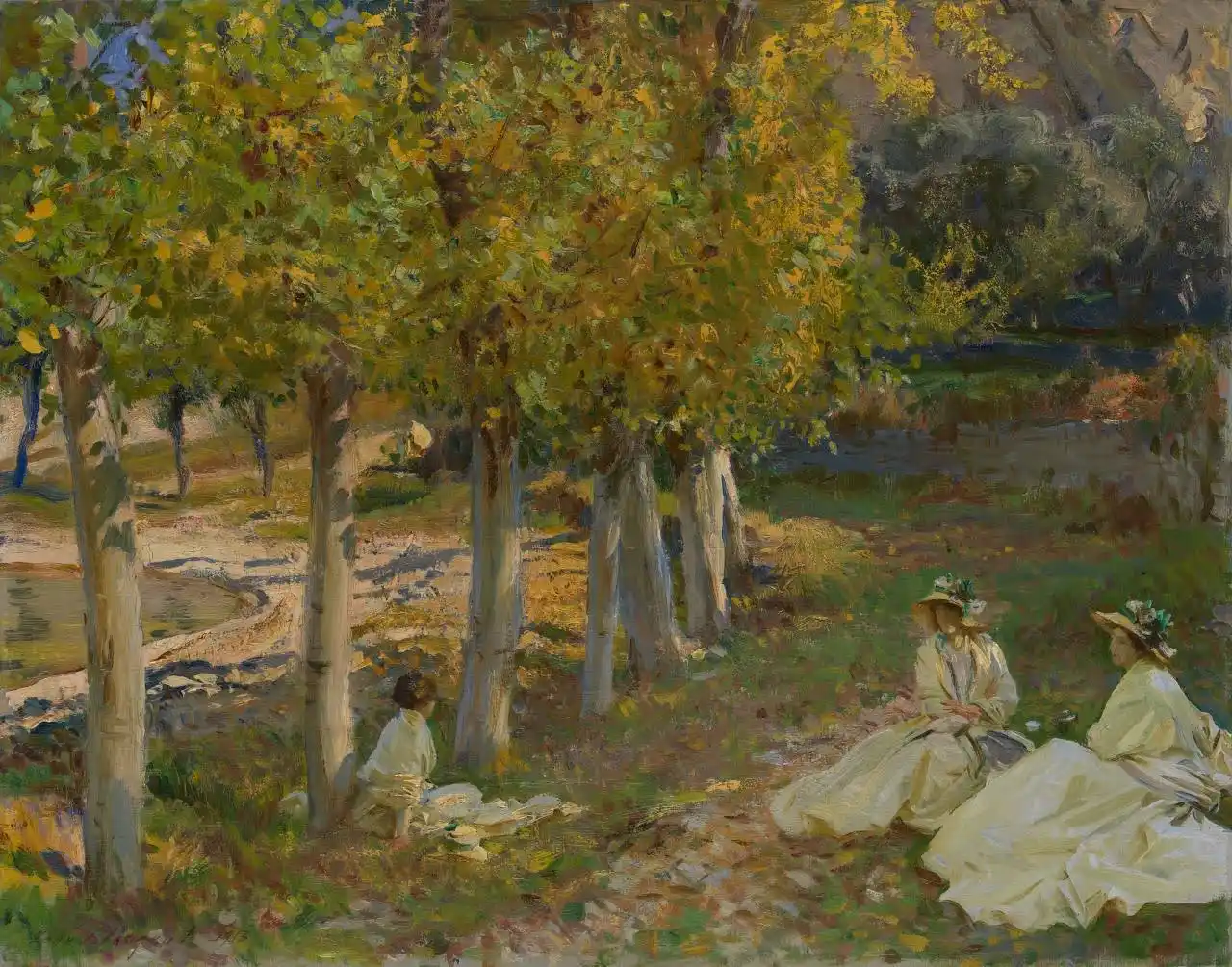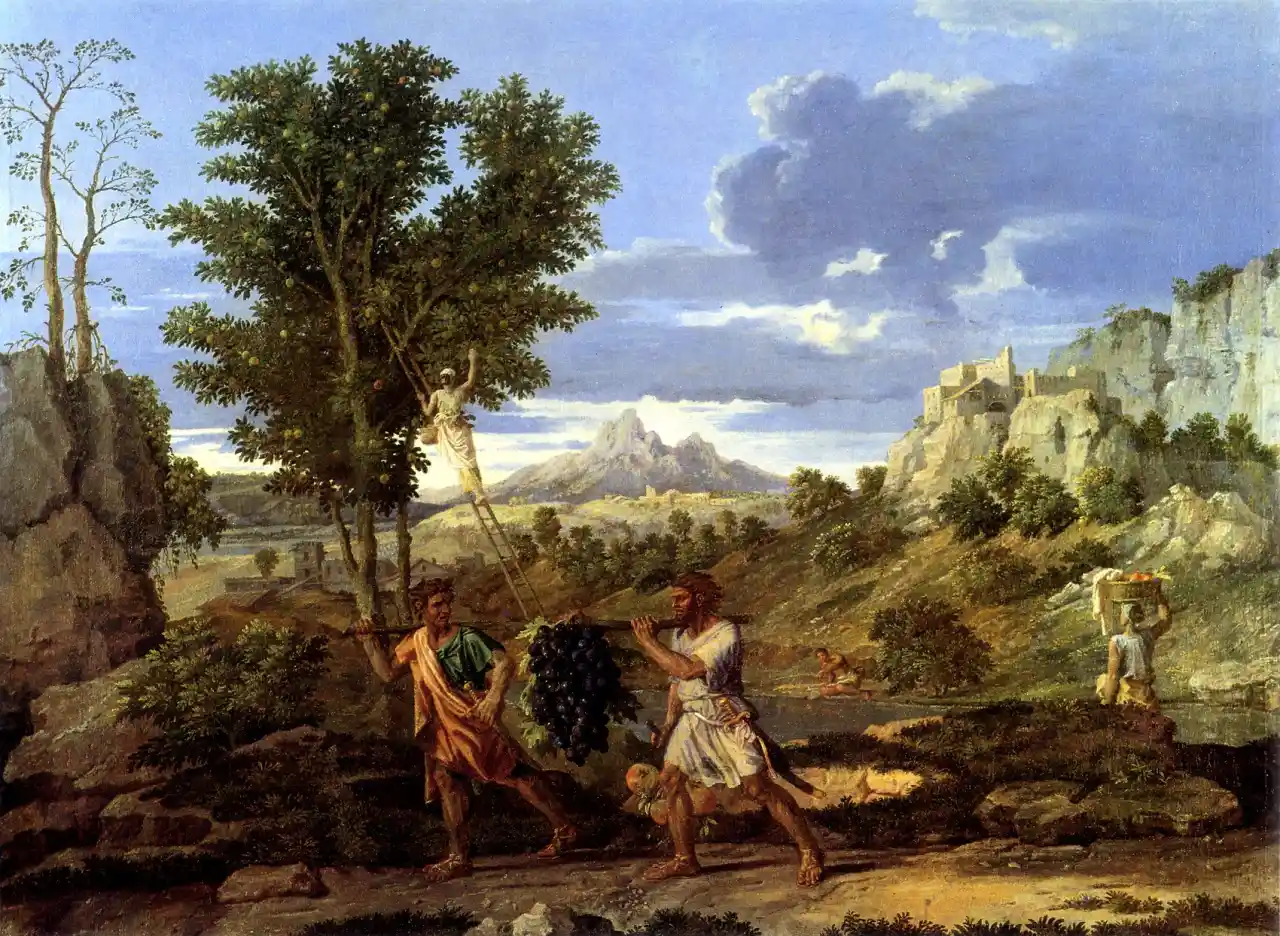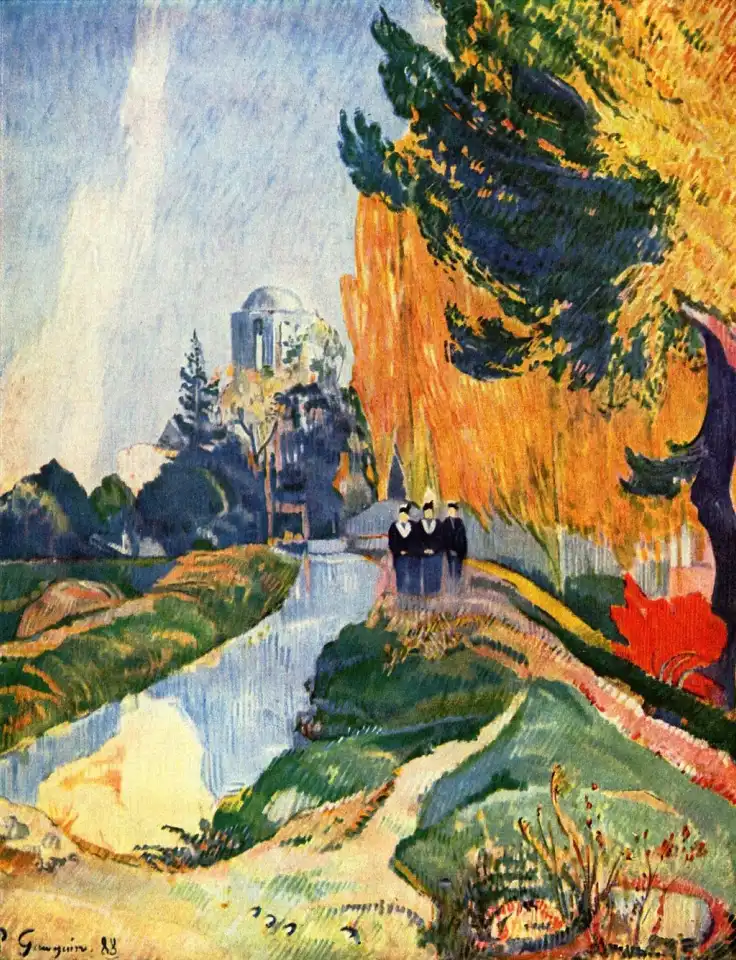Autumn in art history is represented by some stunning paintings. Its warm shades of yellow, red, brown and green inspired generations of artists. Nature changes significantly throughout the season, so you’ll find some very different art pieces with that theme. From allegories to landscapes, the Renaissance to Modern Art, here are some of the most beautiful artworks with the theme of Autumn in art history.
Autumn in Art History
Autumn is my favourite season, and it looks as it was to many artists throughout history. Its golden light gives each painting a special touch, while its warm colours give art pieces a warm feel.
⤷ Read more: 16 Inspiring female artists in history
1 – Gustave Courbet: Autumn, 1866
With the way he uses shades from green to ocher and brown, Gustave Courbet creates an ode to Autumn. Made in 1866, the painting depicts the mountain landscape with a forest on the left and a massive mountain on the right-hand side of the image. Gustave Courbet was one of the leaders of the Realism movement in the 19th century. However, with his painting style on this artwork, you can see why he was so influential to the Impressionists.
2 – Vincent van Gogh: Avenue of Poplars in Autumn, 1884
With the dark colours he used during the first five years of his career, any painting created by Van Gogh while he lived in the Netherlands could represent Autumn in art history. However, his Avenue of Poplars in Autumn, located at the Van Gogh Museum in Amsterdam, is one of his most beautiful autumn paintings. By the colour of the leaves, it could almost be dated in mid-October. Van Gogh captured the warm Autumn light in it beautifully. This is how he described it in one of his letters to his brother Theo:
The last thing I made is a rather large study of an avenue of poplars, with yellow autumn leaves, the sun casting, here and there, sparkling spots on the fallen leaves on the ground, alternating with the long shadows of the stems.
3 – Claude Monet: The Studio Boat, 1875-1876
Claude Monet purchased a small boat shortly after moving to Argenteuil in 1872. He built a wooden cabin on it, big enough to fit him and an easel. He captured his studio boat on many of his paintings. This one here captures the Autumn mood perfectly. Claude Monet was interested in light, colours and natural changes throughout the year. That’s why you’ll find many paintings depicting different seasons in his work.
⤷ Read more: Monet & The Water Lilies
4 – Wassily Kandinsky: Autumn in Bavaria, 1908
Autumn in Bavaria is one of Kandinsky’s paintings in which he creates landscapes in a highly stylised manner. His colours are vivid, brushstrokes quick, and this is one of his first paintings in which he uses a palette knife. With the changing colour of the trees, we can immediately recognise the Autumn mood in this painting despite the strong colour.
⤷ Read more: Best museum Instagram accounts you should follow
5 – Giuseppe Arcimboldo: Autumn (from the Four Seasons), 1573
This painting is part of a series of four artworks by Italian artist Giuseppe Arcimboldo. He represented seasons as portraits of four men composed of fruit, vegetables and plants related to that time of the year. We can recognise some typical Autumn fruits in this painting, like a pumpkin, grapes, chestnuts, mushrooms, pears and apples.
6 – Egon Schiele: Four Trees, 1917
Although famous for his figurative art, Egon Schiele was fascinated by nature, especially trees and flowers. He made a few paintings with the theme of trees in Autumn. This is the last one painted shortly before his death in October 1918. The painting depicts four Autumn trees in a different decay stage.
Painting alone is not enough for me; I know that one can use colours to establish qualities. When one sees an autumnal tree in summer, it is an intense experience that involves one’s whole heart and being; and I should like to paint that melancholy. (Egon Schiele)
7 – John Atkinson Grimshaw: Late October, 1882
John Atkinson Grimshaw was a British Victorian-era painter famous for his landscapes and cityscapes. By this painting’s format, you can feel he used photography in his artwork. He’s known to have used camera obscura, as well. The colours of the painting, the pale sky and the captured tranquillity make it one of the most beautiful Autumn paintings in art history.
8 – Camille Pissarro: The Large Walnut Tree, Autumn Morning, Éragny, 1897
Although, at first, Pissarro’s painting looks bright with its pastel colours, we quickly realise it depicts the Autumn scene with the half-bare tree branches and leaves changing the colours from green to brown. With its focus on light, colours and neat brushstrokes, The Large Walnut Tree, Autumn Morning, Éragny makes one of the most beautiful Impressionist Autumn paintings.
⤷ Read more: Impressionists in Paris
9 – Edward Wilkins Waite: Evening, Brockham, 1890
Edward Wilkins Waite was an English landscape painter who was well-known during his life and exhibited in many museums in London. His painting Evening, Brockham pulls you into an atmosphere of a cold Autumn day. The bare trees tell the scene is set up on a late Autumn rainy day. The painting has a fascinating depth and story to be revealed.
10 – Walter Moras: Autumnal Lane
Walter Moras was a German painter specialising in landscape scenes. You can find some of his artworks among my selection of some of the most beautiful winter paintings in art history. This painting perfectly captures Autumn’s essence with shades from ocher to brown and leaves covering the street.
11 – John Singer Sargent: Autumn Leaves, 1913
With its soft brushstrokes and brighter colours, John Singer Sargent’s painting has an early Autumn day feel. This American painter spent most of his life in Europe, especially in Paris, where he got acquainted with the Impressionist movement. He was a society artist, so this is one of the rare landscape paintings within his artwork. However, with three ladies sitting on the grass, society is also present in his Autumn painting.
12 – Nicolas Poussin: Autumn (from the Four Seasons), 1660 – 1664
The Four Seasons is Nicolas Poussin’s last set of paintings he finished before his death. Contrary to the earlier representation of this theme, in which different seasons were depicted by everyday life scenes or allegories, Poussin is showing them with the Old Testament stories. In his Autumn scene, he shows Israelis returning with grapes from the promised land of Canaan. The season is also represented by the grape harvest and the first changes in the colour of the tree leaves.
13 – Paul Gauguin: Les Alyscamps, 1888
In the Autumn of 1888, Paul Gauguin joined his friend Vincent van Gogh in Arles. The two artists lived and worked together, so seeing some of the same motives in their paintings is interesting. You can see an example in the images under numbers 13 and 14. Although the painting shows a recognisable Gauguin’s style and contrasting colours, he perfectly captured Autumn’s mood.
14 – Vincent van Gogh: Les Alyscamps, 1888
Van Gogh painted his artwork next to Paul Gauguin, working on his painting of the same theme. Researchers could determine the precise timeframe of these artworks. They were made between 28 and 31 October 1888. During that time, Van Gogh made four paintings showing the Les Alyscamps, an ancient Roman necropolis in Arles.
⤷ Read more: Art History Lesson – Vincent van Gogh
15 – Yokoyama Taikon: Autumn Leaves, 1931
Made in 1931, the Yokoyama Taikon’s Autumn Leaves is the most unique piece among these paintings representing Autumn in art history. The bright blue background doesn’t immediately remind us of Autumn. But the tree covered in red leaves makes an unmissable symbol of that season, making this artwork one of the most beautiful Autumn paintings.
⤷ Read more: 15 Best museums in Europe to visit in 2023
With its beautiful colours and so much symbolism of the change, the circle of life and transience, Autumn was inspirational to artists throughout history. This selection of some of the most beautiful paintings bearing the theme of Autumn in art history will put you in that cosy Autumn mood.
What is your favourite painting with an Autumn theme in art history? Let me know in the comments!




